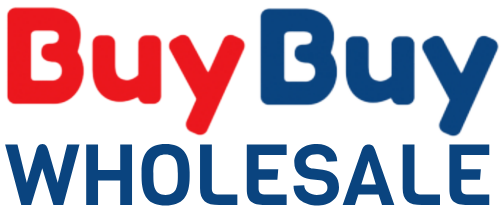Understanding Wholesale Pricing: An Overview
Wholesale pricing is a fundamental concept in the business world, particularly in the context of supply chains and commerce. At its core, wholesale pricing refers to the cost at which goods are sold in large quantities to retailers, distributors, or other businesses rather than directly to consumers. This pricing strategy is distinct from retail pricing, where products are sold individually at a higher cost to end users.
The economics behind wholesale pricing are grounded in volume sales and economies of scale. By selling products in larger quantities, businesses can reduce the cost per unit, thereby enabling them to offer lower prices. Manufacturers, for instance, can produce goods at a lower cost per item when they operate on a larger scale. This cost reduction is passed down the supply chain, allowing wholesalers to sell products at a lower price point while still securing a profit margin. This balance between cost efficiency and profit generation is the cornerstone of wholesale pricing strategies.
Several types of businesses typically engage in wholesale pricing, including manufacturers, distributors, and wholesalers. Manufacturers produce goods and often sell them in bulk to distributors or direct to retailers. Distributors act as intermediaries, purchasing large quantities of products from manufacturers and selling them to retailers or other businesses. Wholesalers, on the other hand, buy products in bulk from manufacturers or distributors and sell them to retailers, often at significantly reduced prices.
Wholesale pricing is prevalent across various industries, from electronics and consumer goods to food and beverages. For example, a case study in the electronics industry reveals how a wholesale distributor was able to offer smartphones at reduced prices by purchasing in bulk directly from the manufacturer. This allowed retailers to stock up on inventory at lower costs and pass on some of the savings to consumers, ultimately increasing their competitive edge in the market.
The advantages of purchasing products at wholesale prices are manifold. Businesses benefit from significant cost savings, as buying in bulk typically results in a lower price per unit. This is particularly advantageous for retailers who can stock their shelves with products at a reduced cost, thereby improving their profit margins. Additionally, wholesale purchasing often involves bulk buying, which helps businesses maintain a steady supply of inventory. Furthermore, the potential for resale at higher retail prices creates opportunities for profit generation.
In summary, understanding wholesale pricing is crucial for businesses looking to optimize their procurement strategies and enhance profitability. Whether you are a manufacturer, distributor, or retailer, leveraging the benefits of wholesale pricing can lead to substantial cost savings and competitive advantages in the marketplace.
How to Access Wholesale Prices: Tips and Strategies
Accessing wholesale prices can provide significant cost savings for both consumers and businesses. There are various channels through which wholesale products can be purchased, each with its unique advantages. One common method is purchasing directly from manufacturers. This often results in the lowest prices but may require larger order quantities. Alternatively, buying through wholesale distributors offers a balance between order size and cost, as these intermediaries purchase in bulk from manufacturers and sell in smaller quantities to various buyers. Online wholesale marketplaces have also become increasingly popular, providing a convenient platform to compare prices and products from multiple suppliers without the need for physical visits.
Establishing strong relationships with wholesale suppliers is crucial for long-term success. Networking plays a pivotal role in this process. Engaging with industry contacts, attending trade shows, and participating in relevant forums can open doors to new opportunities. Trade shows, in particular, provide a valuable venue for meeting suppliers face-to-face, understanding their offerings, and building rapport. Leveraging existing industry contacts can also lead to introductions to reliable suppliers.
To qualify for wholesale pricing, certain requirements must be met. Typically, businesses need to provide a valid business license and tax ID. Additionally, many suppliers have minimum order quantities (MOQs) that must be met to access wholesale rates. These requirements ensure that only legitimate businesses benefit from the lower prices intended for bulk purchases.
Negotiating better wholesale deals involves a combination of research, communication, and persistence. Understanding the market rates and the supplier’s terms and conditions is essential. Being transparent about your needs and volume can sometimes lead to better pricing or favorable payment terms. It is also advisable to discuss potential discounts for long-term agreements or higher purchase volumes.
However, the wholesale buying process is not without its challenges. Common pitfalls include hidden costs, such as shipping fees or additional taxes, and the risk of receiving subpar products. To avoid these issues, it’s important to thoroughly vet suppliers, read reviews, and understand all terms and conditions before making a purchase. Establishing a reliable and trustworthy supplier network can mitigate many of these risks, ensuring a smoother and more profitable wholesale purchasing experience.
